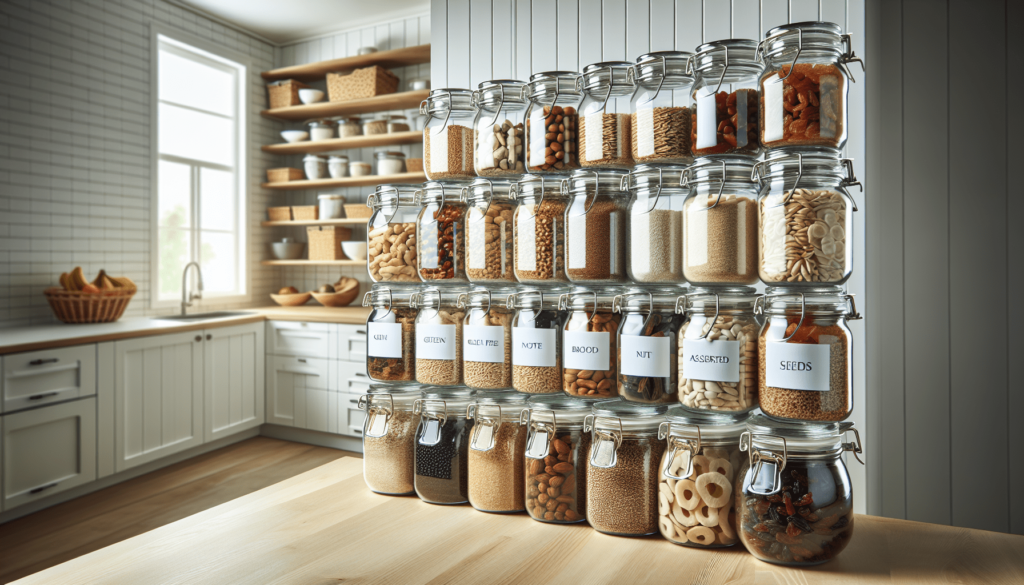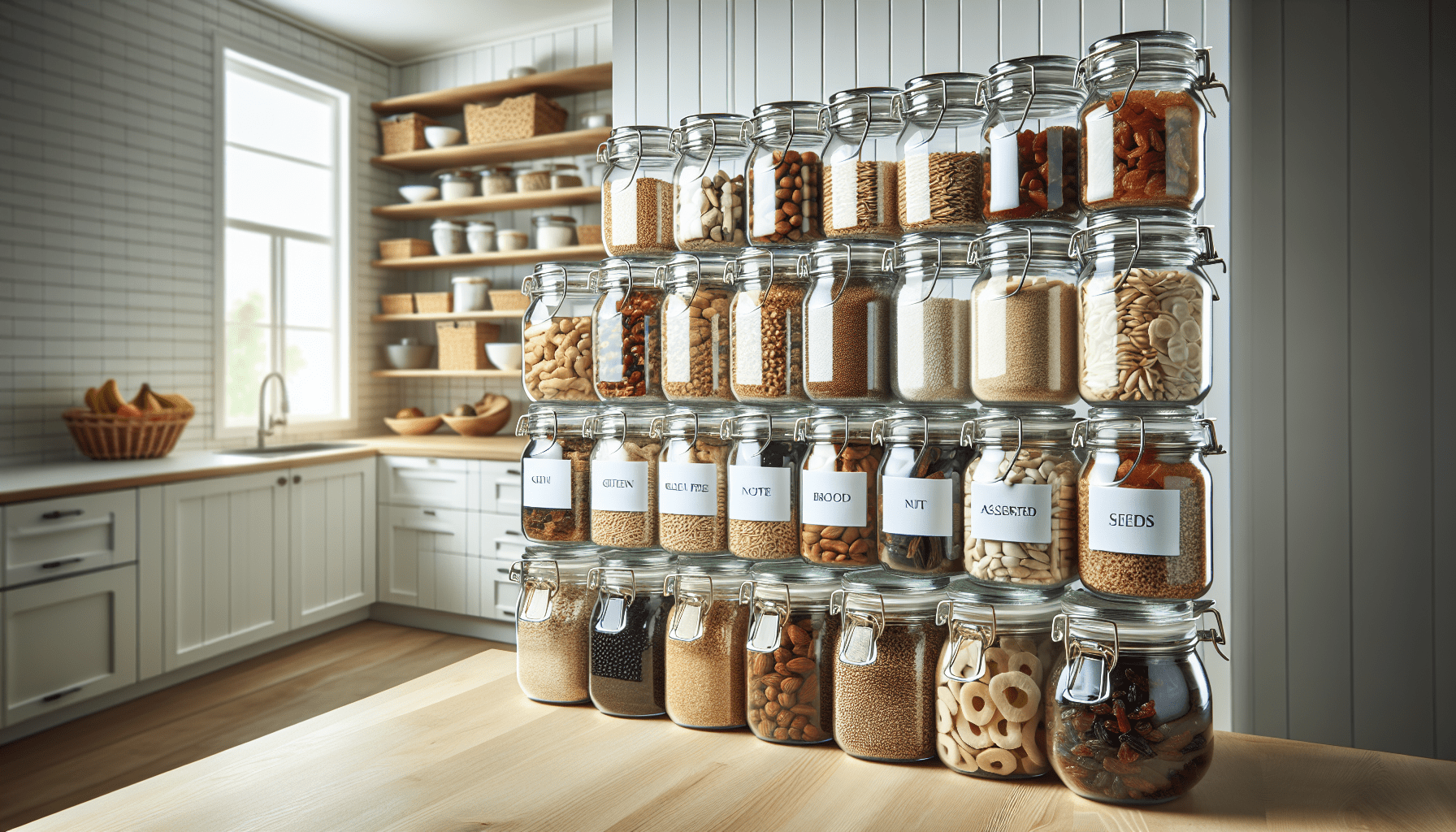You’re about to dive into “The Ultimate Guide to Allergy-Free Food Storage and Preservation,” a comprehensive resource designed just for you. This guide is packed with practical tips and expert advice on how to store and preserve food in a way that keeps allergens at bay, ensuring you and your loved ones can enjoy safe and delicious meals. From understanding the best storage techniques to learning about the latest preservation methods, this article will make your journey to allergy-free eating simpler and more enjoyable. Have you ever wondered how you can store and preserve your food to keep it safe from allergens? In today’s world, managing food allergies requires more than just careful cooking and shopping; it also involves smart storage and preservation techniques. You don’t want to accidentally expose yourself or your loved ones to allergens due to improper handling or storage practices. In this friendly guide, we’ll walk you through everything you need to know about allergy-free food storage and preservation.

Understanding Food Allergies
Before diving into the specifics of storage and preservation, it’s crucial to understand the basics of food allergies. Food allergies occur when your immune system mistakenly identifies a harmless food protein as a threat. The most common food allergens include peanuts, tree nuts, milk, eggs, wheat, soy, fish, and shellfish.
Reactions to allergens can range from mild to severe, and in some cases, can be life-threatening. Therefore, it’s essential to minimize exposure to allergens, starting with your food storage methods.
Basic Principles of Allergy-Free Food Storage
Storing food properly can be a game-changer in managing food allergies. Here are some basic principles to keep in mind:
Separate Storage
Store allergen-free foods separately from foods containing allergens. This helps prevent cross-contact, where allergens from one food contaminate another.
Tips for Separate Storage
- Use Different Shelves: Designate specific shelves in your pantry, fridge, and freezer for allergen-free foods.
- Label Clearly: Use labels to mark which shelves or containers are allergen-free.
- Sealed Containers: Store allergen-free foods in sealed containers to further reduce risk.
Cleanliness is Key
Keeping your storage areas clean is crucial for preventing cross-contact with allergens.
Cleaning Tips
- Regular Cleaning: Clean your pantry, fridge, and storage containers regularly.
- Use Separate Cleaning Supplies: If possible, use separate sponges, cloths, and brushes for cleaning areas where allergen-free foods are stored.
- Check for Residue: Make sure no food residues are left behind during cleaning.
Know Your Labels
Understanding food labels is vital for anyone managing food allergies. The Food Allergen Labeling and Consumer Protection Act (FALCPA) mandates that the eight most common allergens must be clearly listed on food labels in the U.S.
Label Reading Tips
- Read Every Time: Always read labels, even if you’ve bought the product before. Manufacturers can change ingredients without warning.
- Look for Warnings: Check for advisory statements like “may contain,” “processed in a facility that also processes,” and “manufactured on shared equipment.”
Organize Smartly
An organized kitchen and storage area can make managing food allergies much easier.
Organizational Tips
- Group by Allergen-Free Status: Store allergen-free foods together for easy access.
- Use Color Codes: Consider color-coding containers, shelves, and utensils to signify allergen-free items.
- Inventory Check: Keep an inventory of allergen-free foods and their expiration dates to avoid accidents with expired foods.
Preserving Allergy-Free Foods
Properly preserving allergen-free foods ensures they stay fresh and safe to consume. Here are some popular preservation methods suited for maintaining allergy-free foods:
Refrigeration
Refrigeration slows the growth of bacteria, keeping your allergen-free foods safer for longer periods.
Refrigeration Tips
- Temperature Control: Keep your fridge at 40°F (4°C) or below to preserve food quality.
- Use Labels: Label everything with dates and allergen-free status to avoid confusion.
- Proper Placement: Store allergen-free foods on the upper shelves to minimize the risk of contamination from other foods.
Freezing
Freezing allergy-free foods is a great way to extend their shelf life while preserving their nutritional value.
Freezing Tips
- Freezer Temperature: Maintain your freezer at 0°F (-18°C) or lower.
- Proper Packaging: Use airtight, moisture-proof packaging to retain food quality.
- Thawing Safely: Thaw foods in the fridge rather than at room temperature to minimize bacterial growth.
Canning
Canning is an effective method for preserving allergen-free foods like fruits, vegetables, and sauces.
Canning Tips
- Sanitize Equipment: Sterilize jars, lids, and other equipment before use.
- Follow Recipes: Use tested and approved recipes to ensure safe acidity levels.
- Check Seals: Inspect the seal on each jar to make sure it is airtight.
Drying
Drying removes moisture from food, preventing the growth of bacteria, yeast, and mold. This is a suitable method for preserving fruits, vegetables, and meats.
Drying Tips
- Uniform Slices: Cut foods into uniform pieces for even drying.
- Proper Storage: Store dried foods in airtight containers to maintain dryness and prevent contamination.
- Label Dates: Record the drying date on the container to track freshness.
Special Focus: Common Allergen-Free Foods
Some allergen-free foods require special attention when it comes to storage and preservation. Here, we break down tips for some of the most common allergen-free foods:
Gluten-Free Products
Gluten-free products can be prone to cross-contamination.
Storage Tips for Gluten-Free Products
- Sealed Containers: Store gluten-free flours and grains in airtight containers to avoid contamination.
- Dedicated Equipment: Use dedicated kitchen equipment, such as mixing bowls and measuring spoons, to keep gluten-free foods safe.
- Short Shelf Life: Be mindful of the shorter shelf life of some gluten-free products, and check expiration dates regularly.
Dairy-Free Alternatives
Dairy-free alternatives, such as plant-based milks and cheese, can spoil quickly if not stored properly.
Storage Tips for Dairy-Free Alternatives
- Fridge Placement: Store dairy-free milks and cheeses on the middle or upper shelves of your fridge to keep them cold.
- Airtight Seals: Ensure that cartons and packaging are always sealed tightly.
- Consume Quickly: Use dairy-free alternatives within a few days of opening for optimal freshness.
Nut-Free Foods
Nut-free foods often require careful storage to avoid contact with nuts.
Storage Tips for Nut-Free Foods
- Separate Containers: Keep nut-free snacks and ingredients in clearly labeled, separate containers.
- No Open Storage: Avoid leaving nut-free foods open on counters where nut oils and particles might be present.
- Safe Areas: Store nut-free items in designated cabinet spaces to avoid accidental mix-ups.
Soy-Free Products
From sauces to snack foods, soy is a common allergen, and storing soy-free products safely is a must.
Storage Tips for Soy-Free Products
- Double Check Labels: Ensure that all sauces, marinades, and snacks are indeed soy-free by checking labels.
- Dedicated Spaces: Keep soy-free areas in your pantry or fridge.
- Rotate Stock: Practice a first-in, first-out rotation to keep soy-free products fresh.

Dealing with Common Challenges in Allergy-Free Storage
Managing food allergies can sometimes feel overwhelming, especially when sharing a kitchen with people who do not have allergies. Here are some common challenges and how to address them:
Shared Kitchen Spaces
Sharing a kitchen with family members who do not have allergies can pose significant risks. Consider these strategies to mitigate those risks:
Tips for Shared Kitchen Spaces
- Communication: Clearly communicate the importance of avoiding cross-contact to all kitchen users.
- Dedicated Zones: Designate specific cooking and storage areas for allergen-free foods.
- Separate Utensils: Use different sets of cooking utensils, cutting boards, and dishware for allergen-free preparations.
Kids and Food Allergies
Children with food allergies require extra caution due to their limited understanding and the likelihood of accidental exposure.
Tips for Managing Kids’ Food Allergies
- Education: Teach your children about their allergies and the importance of avoiding certain foods.
- Supervised Eating: Monitor young children during meals and snack times to ensure they don’t inadvertently consume allergens.
- Allergen-Free Snacks: Always have a variety of allergen-free snacks available to avoid temptation.
Traveling and Food Allergies
Traveling can be daunting when you have food allergies, but preparation can make it manageable.
Tips for Traveling with Food Allergies
- Pack Snacks: Bring plenty of allergy-free snacks to avoid reliance on potentially unsafe options.
- Research Ahead: Look up restaurants with allergen-free menus and ask about their preparation methods.
- Emergency Plan: Have an emergency plan in case of accidental exposure, including carrying antihistamines and an epinephrine auto-injector.
Emergency Preparedness and Food Allergies
Emergencies like natural disasters or power outages can further complicate managing food allergies. Being prepared can make these situations less stressful.
Emergency Supply Kit
Prepare a dedicated emergency supply kit with allergen-free foods.
What to Include
- Non-Perishables: Stock up on allergen-free canned goods, granola bars, and other non-perishable items.
- Water Supply: Have enough water to last at least three days for each person in the household.
- Medication: Keep an extra supply of necessary medications like antihistamines and epinephrine auto-injectors.
Safe Storage During Power Outages
Power outages can affect food safety, so it’s essential to know how to manage your allergen-free foods during these times.
Tips for Power Outages
- Keep Doors Closed: Minimize opening the fridge and freezer to keep the cold air inside.
- Frozen Water Bottles: Keep frozen water bottles in the freezer to help maintain a low temperature.
- Emergency Cooking: Have a safe alternative cooking method, like a camping stove, for preparing allergen-free meals.
Conclusion
Storing and preserving food in an allergy-free environment may seem daunting at first, but with the right strategies and careful planning, it is entirely manageable. By following the principles outlined in this guide, you can create a safe space in your home, be better prepared for emergencies, and even travel with confidence. Remember, a little extra attention to how you store and handle your food can go a long way in managing allergies and ensuring a safe and healthy lifestyle. Happy eating!
